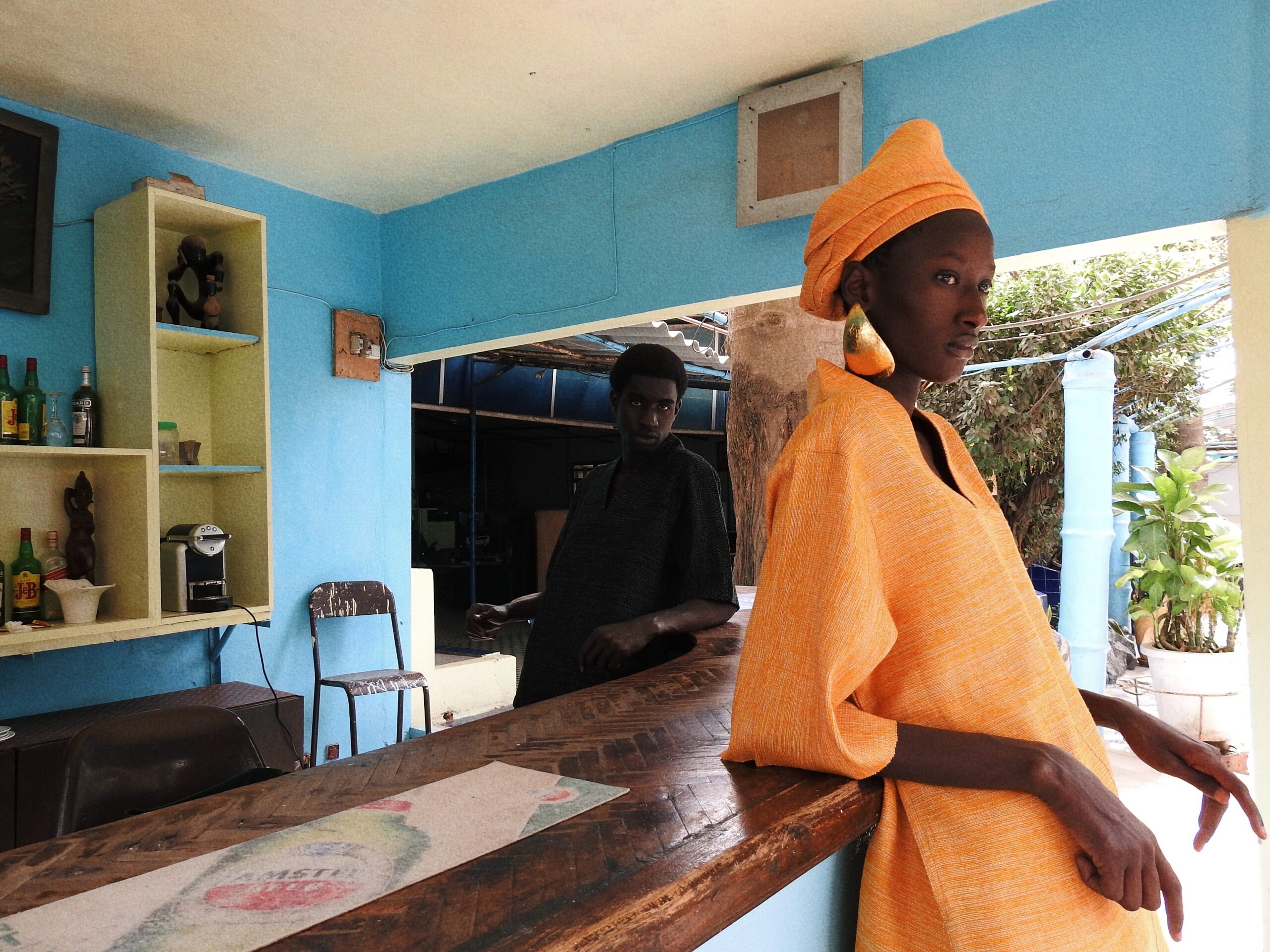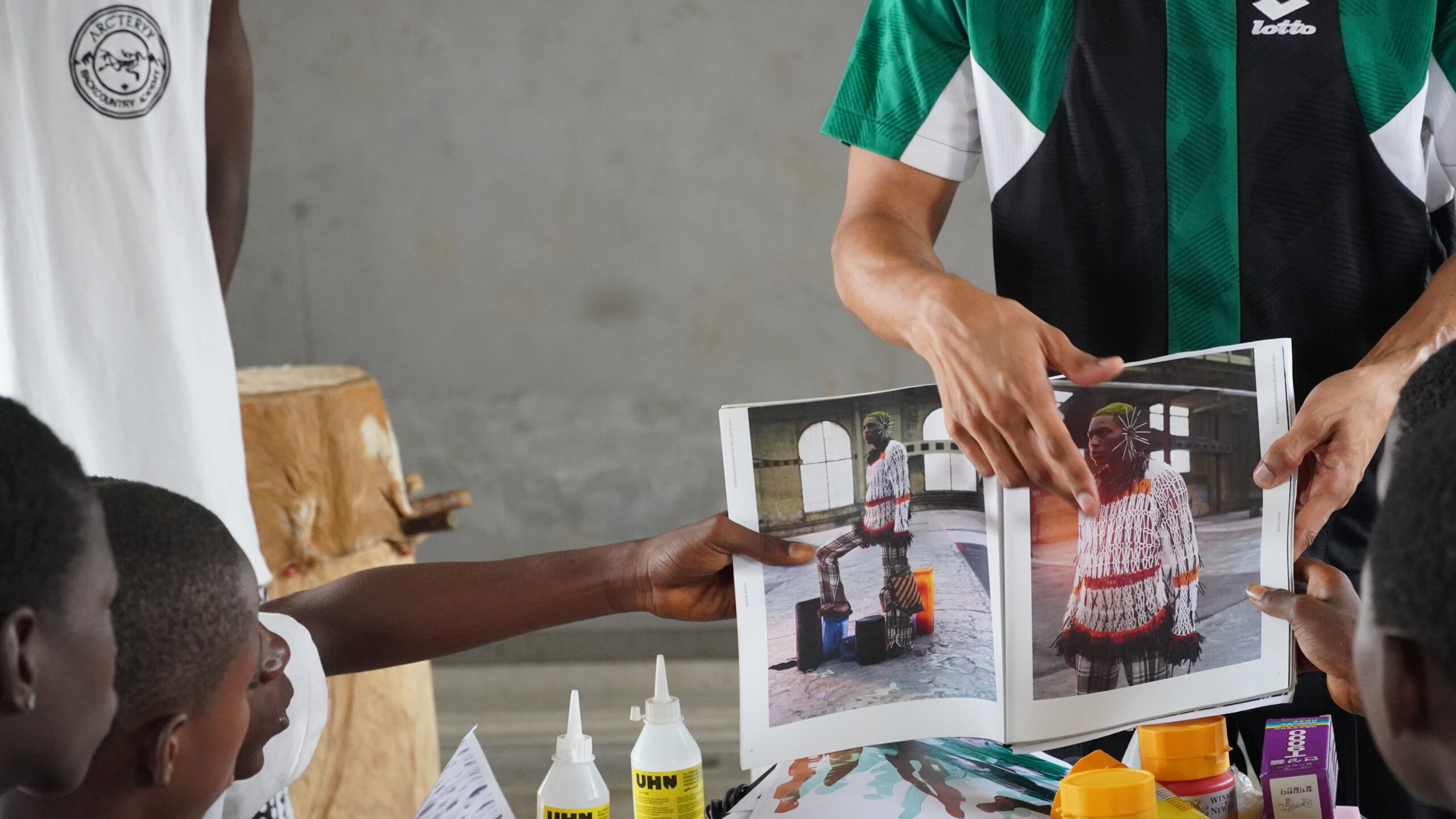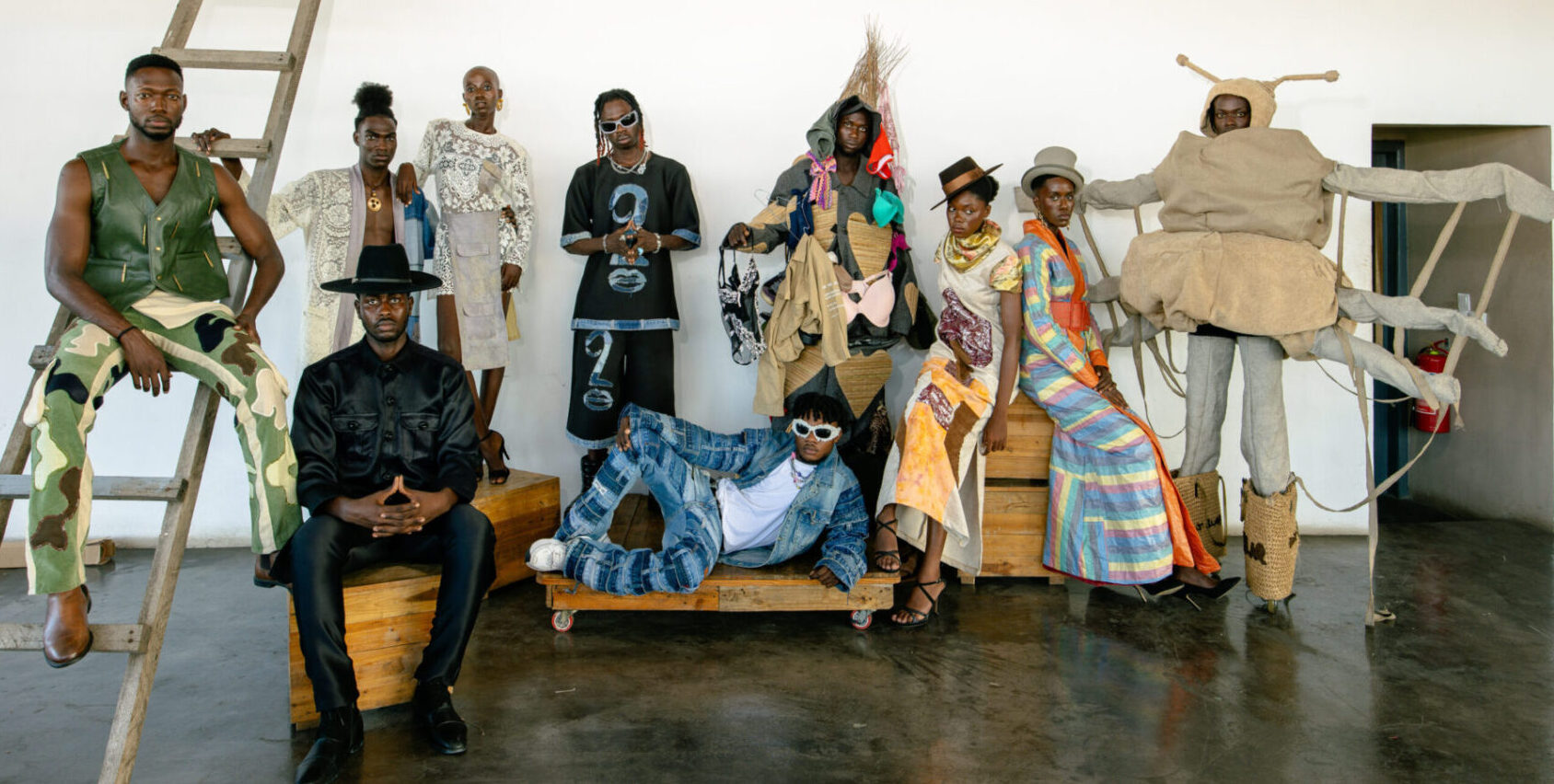Researcher, activist and educator Joyce Addai-Davis tells us about building a better future through regenerative design
“As a footwear activist, I see questions around sustainability as directly linked to my identity and fashion, and the answers to those questions are my design outcomes. I don’t claim to have all the answers, as the work is still evolving, but I do take pride in surrendering to iterative design processes and unexpected discoveries. For me, it’s essential that every piece of footwear or clothing I design is rooted in desire and grounded in my Ghanaian lineage. West Africa’s ancestral-craftsmanship practices are the true foundations of early sustainable systems, and they deeply inform my work today.

I originally moved to the UK from Ghana in the early 1990s with my mother, who appreciated designer fashion. I remember our pantry was lined with Gucci shoe boxes rather than tinned beans. She liked things that would last and took care to repair them. I studied woven textiles at Chelsea College of Arts and after graduating I worked on a community textile project in northwest Thailand that taught me the humanitarian aspect of creativity. Back in the UK, couturier Maria Fidalgo mentored me in the art of patternmaking. When I made something for someone that fitted very well, and I’d see them do a little dance, I knew it meant that they understood its value and would wear it for longer.
I gained experience designing clothes for outlier bodies who weren’t able to find garments in the mainstream and that opened a door for me to create a tour wardrobe for singer-songwriter Nao. However, it left me wondering what happened to those garments afterward, and feeling the need to re-evaluate my process. So, in 2021 I started an MA at the Royal College of Art (RCA) where making clothes was part of the remit and coming out with a collection would establish you as a designer. But what impact would these garments make? After the first term, I went back to Ghana for Christmas to decompress. I was on the beach and saw a New Look shoe lying on the sand in amongst other textile waste. That was my eureka moment. I couldn’t continue to design in the same way anymore.

My research led me to the question, ‘Should it really exist if it can’t be absorbed by the earth?’ And to my film project ‘Chronicles of a Bola (Waste) Girl’.Bola means ‘waste’ in Twi and ‘bring wealth home’ in Yoruba. This duality between burden and opportunity intrigued me as I followed the journey of post-consumer clothes from UK charities to Ghana. I’ve always known Accra’s Kantamanto Market and have family members who’ve worked there. You used to be able to find cool vintage but now, because of fast fashion, the quality is in decline. Around 70% of each bale that traders buy will be waste.

I also spent time at the Old Fadama landfills just outside of Kantamanto Market, analysing the inexpensive compositions of the footwear I found. I considered the fact that at the inception of any product, it’s the designer who has the power to mitigate waste. So, I grappled with the value chain and manufacturing processes to come up with an afterlife plan for anything I produced.

In tandem, I looked at my heritage. At how Ghanaian chieftaincy adorn themselves in gold jewellery, which is passed on to the next generation to be melted down and remade. And how the woven strips of kente fabric can be disassembled and restitched into different garments. I liked the idea of crafting newness from something old.
From history, I was drawn to the story of Yaa Asantewaa, a leader from the Ashanti Kingdom who famously led an army, including many women, against colonial rule. I fell in love with her heroism and wanted to put that same audacity into protesting against waste colonialism. If Yaa was here today, and if she had a male counterpart – what I call ‘Yaa’s boo’ – what would they wear to walk into spaces like the UN or the White House? What modern amulets would protect them? My answer was boxing boots, trainers and unibody suits made from leather off-cuts.
“West Africa’s ancestral-craftsmanship practices are the true foundations of early sustainable systems, and they deeply inform my work today”
Another inspiration has been the Ashanti Golden Stool which contains the Adinkra symbol ‘Only God can judge’. I take this philosophically to mean that we are all responsible for sustainability, from government to conglomerate to designer to consumer, so we must work collaboratively to find solutions.
This all feeds into my current methodology around using the materials you have access to. For different projects, I’ve worked with footwear studios, bag brands and eyewear brands to repurpose their pre-consumer waste. I’m getting to a position where manufacturers could give me large volumes of the same off-cuts to be re-engineered by brand ADDAI-DAVIS. In that way, I can scale. This September I’m launching a footwear collection with an accompanying zine.
A further area of speculative research is in the digital space. During one residency, I used a VR design package to ideate in 3D and create shoes that could be 3D printed. When no longer needed, they could be crushed down and re-made. The other lens is looking at augmented realities and NFTs in the way that they create fashion that you only enjoy in your digital world. There’s the serious issue of how much energy is used to power our virtual lives. But it’s important to learn and explore and then decide where it sits with you.


Now as a lecturer at the RCA, I challenge my students to justify making the new thing they want to create and to come up with its exit plan. They’re open to the provocation because they’re already wanting to reimagine better fashion futures. Being sustainable can mean different things to each of us. It could be making fashion for wheelchair users, or opting for materials that are biodegradable, or researching the science behind regenerating landfill waste. When you consider the global fashion industry, it can feel hopeless but I remain optimistic. If consumers adopt the notion of buying less and better, and designers make less and better, then these two intentions collide. It starts with having the conversations.”
As told to Helen Jennings
Visit Joyce Addai Davis Instagram
„Ich betrachte Nachhaltigkeit in meiner Arbeit als untrennbar mit meiner Identität und meinem Design verbunden. Die Antworten auf diese Fragen spiegeln sich direkt in meinen Schuhen und Kleidungsstücken wider. Ich behaupte nicht, alle Antworten zu haben, denn meine Arbeit entwickelt sich noch, aber ich bin stolz darauf, mich iterativen Prozessen und unerwarteten Entdeckungen hinzugeben. Für mich ist es essenziell, dass jedes Stück aus dem Wunsch heraus entsteht und tief in meiner ghanaischen Herkunft verwurzelt ist. Die handwerklichen Traditionen Westafrikas bilden die wahren Grundlagen früher nachhaltiger Systeme und prägen meine Arbeit bis heute.
Ursprünglich zog ich Anfang der 1990er Jahre mit meiner Mutter aus Ghana nach Großbritannien. Sie hatte ein Faible für Designer-Mode. Ich erinnere mich: Unsere Vorratskammer war eher mit Gucci-Schuhkartons gefüllt als mit Dosenbohnen. Sie mochte Dinge, die lange hielten, und achtete darauf, sie zu reparieren. Ich studierte gewebte Textilien am Chelsea College of Arts, und nach meinem Abschluss arbeitete ich an einem Community-Textilprojekt im Nordwesten Thailands, das mir die humanitäre Seite von Kreativität näherbrachte. Zurück im Vereinigten Königreich mentorierte mich Couturierin Maria Fidalgo in der Kunst des Schnittmusters. Wenn ich etwas für jemanden anfertigte, das perfekt passte – und ich sah, wie die Person einen kleinen Tanz machte – wusste ich, dass sie dessen Wert verstanden und es länger tragen würden.
Ich sammelte Erfahrung im Entwerfen von Kleidung für Körperformen, die in der Mainstream-Mode keine passende Kleidung fanden. Das öffnete mir die Tür, eine Tour-Garderobe für die Singer-Songwriterin Nao zu kreieren. Gleichzeitig stellte ich mir die Frage, was nachher mit diesen Kleidungsstücken geschieht, und spürte den Drang, meinen Prozess neu zu überdenken. So begann ich 2021 ein Master-Studium am Royal College of Art (RCA), wo das Anfertigen von Kleidung Teil des Studienplans war und das Präsentieren einer Kollektion einen als Designer:in etablierte. Aber welche Wirkung würden diese Kleidungsstücke haben? Nach dem ersten Semester kehrte ich zu Weihnachten nach Ghana zurück, um abzuschalten. Am Strand sah ich einen New-Look-Schuh im Sand liegen – zwischen anderem Textilmüll. Das war mein Eureka-Moment. Ich konnte nicht mehr auf die gleiche Weise weiterdesignen.
Meine Forschung führte mich zu der Frage: „Sollte es wirklich existieren, wenn es nicht von der Erde aufgenommen werden kann?“ Daraus entstand mein Filmprojekt ‘Chronicles of a Bola (Waste) Girl’. Bola bedeutet in Twi „Abfall“ und in Yoruba „Reichtum nach Hause bringen“. Diese Dualität zwischen Last und Chance faszinierte mich, während ich den Weg gebrauchter Kleidung von UK-Charities nach Ghana verfolgte. Ich kenne den Kantamanto Market in Accra schon lange und habe Familienmitglieder, die dort gearbeitet haben. Früher fand man dort coole Vintage-Stücke – heute, durch Fast Fashion, nimmt die Qualität ab. Rund 70 % jeder Ballen, den Händler:innen kaufen, ist Müll.
Ich verbrachte auch Zeit auf den Mülldeponien Old Fadama direkt außerhalb des Kantamanto-Marktes, um die Zusammensetzung der Schuhe zu analysieren, die ich fand. Mir wurde klar, dass es vom Designer abhängt, wie viel Abfall am Anfang eines Produkts entsteht. Also beschäftigte ich mich mit der Wertschöpfungskette und den Produktionsprozessen, um einen Plan für das „Nachleben“ jedes von mir hergestellten Stücks zu entwickeln.
Parallel betrachtete ich mein Erbe: Wie ghanaische Chiefs Goldschmuck tragen, der an die nächste Generation weitergegeben, eingeschmolzen und neu gefertigt wird. Wie die gewebten Kente-Streifen auseinander genommen und zu neuen Kleidungsstücken zusammengenäht werden können. Ich mochte die Idee, Neues aus Altem zu schaffen.
Aus der Geschichte zog mich besonders Yaa Asantewaa in den Bann, eine Anführerin des Ashanti-Reiches, die eine Armee – darunter viele Frauen – gegen die Kolonialherrschaft führte. Ich verliebte mich in ihre Held:innenrolle und wollte denselben Mut in meinem Protest gegen „Abfall-Kolonialismus“ ausdrücken. Wenn Yaa heute hier wäre, und wenn sie einen männlichen Gegenpart hätte – meinen sogenannten „Yaa’s Boo“ – was würden sie tragen, um zum Beispiel ins UN-Gebäude oder ins Weiße Haus zu gehen? Welche modernen Amulette würden sie schützen? Meine Antwort: Boxstiefel, Sneakers und Unibody-Anzüge aus Lederresten.
Eine weitere Inspiration war der Goldene Ashanti-Hocker, der das Adinkra-Symbol „Only God can judge“ trägt. Für mich bedeutet das philosophisch, dass wir alle Verantwortung für Nachhaltigkeit tragen – von der Regierung über Konzerne bis hin zu Designer:innen und Konsument:innen – und dass wir gemeinsam Lösungen finden müssen.
All dies fließt in meine aktuelle Methodik ein, Materialien zu nutzen, die verfügbar sind. Für unterschiedliche Projekte habe ich mit Schuhstudios, Taschen- und Brillenmarken zusammengearbeitet, um deren Pre-Consumer-Abfälle wiederzuverwenden. Ich erreiche nun einen Punkt, an dem Hersteller:innen mir große Mengen derselben Reste zur Umgestaltung durch ADDAI-DAVIS geben könnten. So kann ich skalieren. Diesen September starte ich eine Schuhkollektion mit begleitendem Zine.
Ein weiteres Forschungsfeld liegt im digitalen Raum. Während eines Stipendiums nutzte ich ein VR-Designpaket, um in 3D zu entwerfen und Schuhe zu kreieren, die 3D-gedruckt werden können. Wenn sie nicht mehr gebraucht werden, könnten sie wieder zermahlen und neu hergestellt werden. Außerdem untersuche ich Augmented Reality und NFTs – und die Art, wie Mode nur in der digitalen Welt erlebt werden kann. Dabei stellt sich ernsthaft die Frage, wie viel Energie für unser virtuelles Leben verbraucht wird. Aber es ist wichtig, zu lernen, zu erforschen und dann zu entscheiden, welchen Platz das für einen selbst einnimmt.
Heute, als Dozentin am RCA, fordere ich meine Studierenden heraus, die Notwendigkeit ihrer neuen Designs zu begründen und einen Exit-Plan zu entwickeln. Sie sind offen für diese Provokation, weil sie bereits bessere Zukunftsvorstellungen von Mode entwickeln wollen. Nachhaltigkeit kann für jede:n etwas anderes bedeuten: Mode für Rollstuhlfahrende zu entwerfen, auf biologisch abbaubare Materialien zu setzen oder die Wissenschaft hinter der Wiederaufbereitung von Deponieabfällen zu erforschen. Angesichts der globalen Modeindustrie mag das hoffnungslos erscheinen, aber ich bleibe optimistisch. Wenn Konsument:innen weniger und besser kaufen – und Designer:innen weniger und besser produzieren – treffen diese beiden Absichten aufeinander. Alles beginnt mit Gesprächen.“


